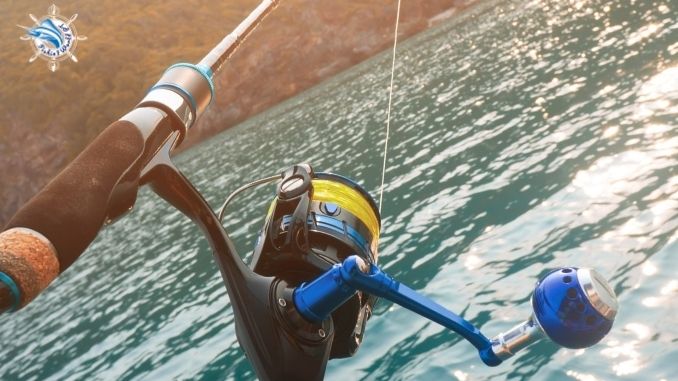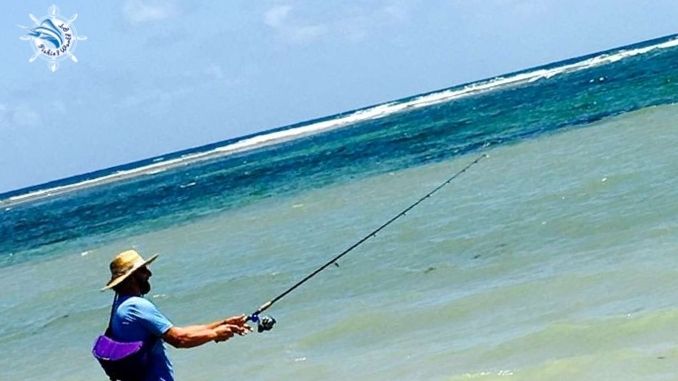Inshore fishing is a style popular among most anglers. However, it is saltwater fishing; the corrosion will make your reel unable to continue fighting with you.
So, what is a good inshore reel? The reel must be resistant to corrosion, catch small fish but still be strong enough to fight large fish passing by, hold and perform the way you want it to and especially suitable for your budget.
The performance of a trip depends a lot on your setup, the reel included. Therefore, choosing a reel that meets inshore fishing is troublesome. I will share information on selecting the suitable reel; you can refer to the article below.
What size reel is best for inshore fishing?
There are two factors to choosing the right reel size for inshore: the size of the line (monofilament or braided) and the fish you are aiming for.
There are three levels of the size of line to choose the right reel size:
- 2-10 lb monofilament line, or 4-15 lb braid line: Small size, from 1000 to 3500
- 8-18 lb monofilament line, or 8-30 lb braid line: Medium size, from 4,000 to 6000
- 14 to 25lb monofilament line, or 15-60 lb braid line: larger size, from 7000 to 9000
Most people fishing will use size reels from 2500 to 5000; most fall into 4000 because you can easily catch small fishes that are still strong enough to fight with bigger fish with these, not monsters. If you don’t know anything about reel size or want to learn more about it, you can think about the article “What Do Spinning Reel Sizes Mean?“
Significantly, the fish you target is also important; it involves the size of the line, ensuring it doesn’t break while fighting.
Note, do not select a too large reel if you don’t target fish with the bigger size. Otherwise, the reel will be very heavy. If you don’t have many muscles, and even yes, you won’t last too long to have more fighting, you will be exhausted.
Can I use large-size reels for inshore fishing?
Of course, it is possible; the larger size of the reels, the bigger the diameter of the spool. That brings the advantages that I guess every experienced angler will like.
- Hold more line, thereby leading to further casting distance
- Fight with big fish
- Run very heavy line
There are fish that will not stand still for you to catch; it will struggle, swim ring, you must meet enough lines to fight it. Even some fish have sharp teeth that can cut off the line at any time, so you end the battle as quickly as possible. Therefore, a large size reel helps you huge in a complex war.
Should we choose spinning or baitcasting reel for inshore?
Again, the fish you target and your fishing style are decisive factors.
Baitcasting reels are excellent when fighting bigger fish and casting at a distance; they also have a special design suitable for combat saltwater corrosion. However, prices will be much higher than spinning reels, and with larger learning curves, you need a lot of experience to master baitcaster. It is the choice of experienced angler.
Meanwhile, the spinning reel is a better choice when you only fight with lighter fish, at closer distances, or using lighter lures or bait rigs. It is famous for its ease of use, low prices, its flexibility; you can use it for any style if you choose a suitable capacity reel.
In summary, a suitable reel for inshore must match your fishing style, and you feel most comfortable when holding there in hand.
How much drag do you need for inshore fishing?
A good reel will have a powerful and reliable drag system, allowing you to release smoothly and consistently without hitching, stopping, or binding if not, it will increase the chances of break-offs and bad hookups.
Many anglers I know, and even I often have a drag system with a max drag of 15 to 30 lbs. This is a suitable number of most inshore fishing styles. Remembering a general principle when installing the appropriate drag system is 20% to 30% of the line capacity.
Please don’t ignore the setup of your traction; it affects a lot to the performance of the trip. If you don’t want to end a trip with only a few fish, you should be serious about it.
Conclusion
I have shared all the information from my knowledge and synthesis from anglers around me; if there is a problem with the answer to the question “What is a good inshore reel?” You can write in the comment section below.
I hope this article is helpful for you.
Further reading:
- Other info about fishing in Fishingandhuntingsports
- Best Saltwater Spinning Reels for Inshore & Offshore Fishing



